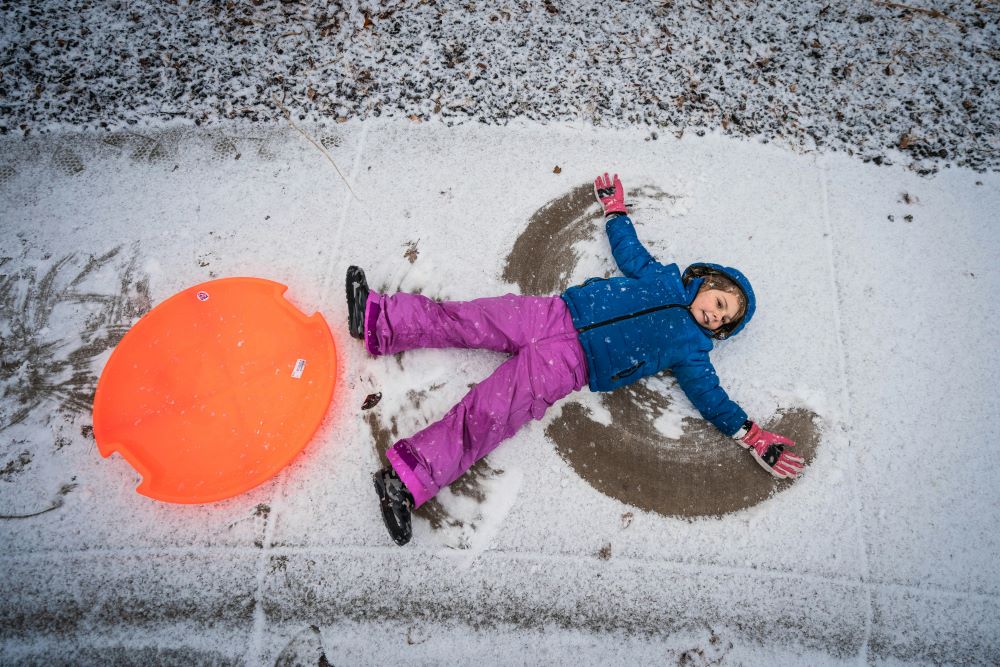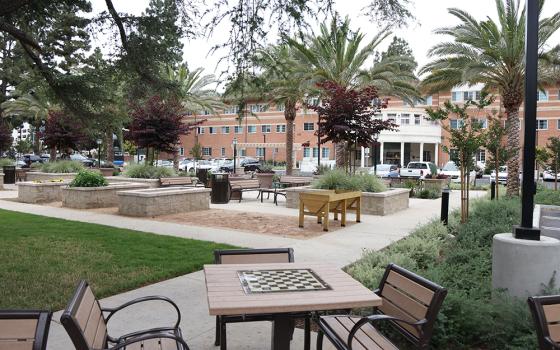
(Unsplash/Jimmy Conover)
Our Catholic tradition is known for its ritual. Those who participate regularly in our formal prayer experiences settle into the ebb and flow with ease. That can be a great comfort, knowing what's coming so one can focus on prayer rather than wondering what happens next. But, it can also be problematic as there is a risk the experiences become routine and we can completely miss the prayer.
A presider friend will often remind the congregation to pray at a pace where we can hear ourselves. That simple phrase startled me the first time I heard it, and the entire congregation did slow down for the recitation of whatever prayer came after his reminder. Unfortunately, more often than not, we all fall back into regular speed and risk missing something.
Recently at Mass, I was minding my own business and going with the flow, when I found myself stunned when the presider rattled off the short bridge prayer between the two pieces of the Lord's Prayer: "As we wait in joyful hope for the coming of our Savior, Jesus Christ." From what I can figure out, the prayer comes from Titus 2:11-14, heard only at the Christmas Mass during the Night.
I started to wonder about joyful hope and what it would mean to wait that way, instead of waiting in irritation or anxiety. And, as so often happens, life got in the way and my wonderings got pushed aside.
Circumstances were such that I found myself home alone on Christmas Eve. As I scrolled through television channels, I came across the Christmas Vigil Mass from the Vatican. The broadcast had just started, and the commentator was explaining the Jubilee Year of Hope and the opening of the Holy Door at St. Peter's in Rome. I had never heard of the Holy Door ritual and found it fascinating.
So, weeks later, the world lives with another fragile ceasefire in the Middle East, an anniversary of the Russian invasion of Ukraine come and gone, the inauguration of a new president in the United States, more climate issues than can be mentioned, and God only knows how many other things that are anything but hopeful. And I once again begin to wonder about living in joyful hope, not in a Pollyanna way but in the kind of joyful hope called for in the Jubilee Year.
I'll be the first to admit, finding hope can take effort. News headlines are often the bad stuff, and you must really dig to find good news. A national news corporation reserves the last five minutes of its Saturday evening broadcast for a segment highlighting the good news from the previous week. While I greatly appreciate the segment, what does it say about us as a society that one mainstream media outlet can only find five minutes a week to share good news?
It was time to get serious about living in joyful hope! Looking back, the first step for me seems obvious: I turned off the news. Where I live, there is evening news from 4-6:30 p.m. daily. I had gotten into the habit of turning on the news as soon as I got home around 4 and leaving it on until 6:30 while I changed clothes, prepared dinner, sorted through the mail, etc. Most of the stories are repeats, and many are anything but hopeful.
Advertisement
Then I started to consciously look for hopeful signs, or maybe a better way to say it is I started to look for hopeful signs in what I was already seeing. For example, I live on a cul-de-sac with 13 residences, and our little circle is diverse in terms of race, age, and relationship status. We do have three 18-month old toddlers who got to experience their first snowfall in February. Every single resident on the cul-de-sac came out on a recent Saturday to shovel an overnight snow, but they ended up watching (and playing with) the littles as they oohed and aahed and played in their first snow. What started as three families with little ones on their own front lawns quickly became a party of sorts as the littles rode sleds and tumbled around and met all their neighbors. The whole encounter was less than 30 minutes, but the joy it brought to a group of winter weary adults was definitely living in joyful hope.
A trip for groceries included bringing home a small pot of unidentified spring bulbs. In northern climates, spring bulbs, even those forced for indoor enjoyment, always bring hope. Will they sprout, will they bloom, what will they be? Mine sprouted long stems, but there was no bloom. I didn't care; watching the dried-up looking bulb crack open and push forth greenery was a sign of the hope spring brings.
Less news, toddlers in snow, and bulbs sprouting (even without flowers) started me on my path to living in joyful hope. How to keep the momentum became the next focus. Most religious communities, and more and more parishes, have some version of the Examen. Even the Franciscan place of ministry I serve has instituted the practice: Before the lunch break, everyone stops for three minutes while the prayer is proclaimed and reflection time is given. The details may differ, but the Examen practice at my place of ministry has a focus on gratitude. I simply tweaked that for myself and substituted hopefulness.
Am I 100% successful? Not even close. But the bridge prayer I first stumbled upon continues at most of the liturgies I attend. The Jubilee Year of Hope is gaining more publicity in my diocese. I'm committed to living in Joyful Hope. Wish me luck.






![The characters Fr. Jud Duplencity (Josh O'Connor) and Benoit Blanc (Daniel Craig) "are very much on opposite sides of the [faith] fence, but they've learned from each other," says Rian Johnson, writer and director of "Wake Up Dead Man: A Knives Out Mystery." (Netflix)](/files/styles/homepage_features_medium/public/2025-12/12.13.25%20Wake%20Up%20Dead%20Man%20image%204.jpg?h=27f45369&itok=iTtG9XdO)